This is the ultimate guide to sourcing wholesale skincare and cosmetics packaging from China. In this guide, you’ll learn everything you need to know about how to import skincare and cosmetics packaging from China.
According to a survey report by Statista, many people use skincare and cosmetics daily. The global cosmetics market is anticipated to surge by 25.1 billion USD (+24.18%) from 2023 to 2028.
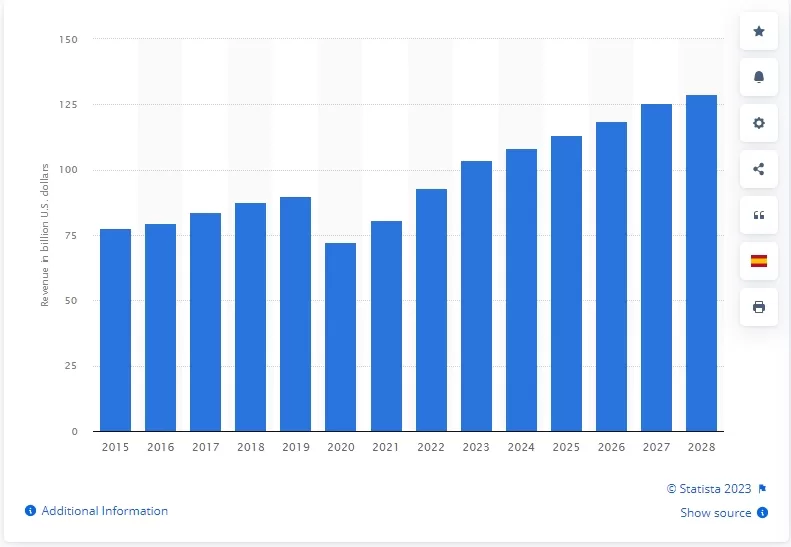 Revenue of the cosmetics market worldwide from 2015 to 2028(in billion U.S. dollars)
Revenue of the cosmetics market worldwide from 2015 to 2028(in billion U.S. dollars)
As the cosmetics industry gains value, there is a growing demand for cosmetics packaging. However, many manufacturers and sellers often overlook importing from China.
China offers diverse, attractive skincare and cosmetics packaging with strong design capabilities. Importing from China remains profitable, so 75% of manufacturers still consider China an ‘important import channel.’
However, importing skincare and cosmetics packaging from China is more accessible than many think.
In this article, we’ll focus on how to import skincare and cosmetics packaging from China and how to identify high-quality suppliers.
What Types of Skincare and Cosmetics Packaging Should You Import?
The different types of packaging provide a protective layer for cosmetics made from many materials during shipping and storage. Additionally, it is a marketing tool pivotal in enticing consumers to purchase.
This is particularly true in the beauty industry. So, when considering your skincare or cosmetic packaging, you should focus on:
Skincare / Cosmetic Packaging Type
Consider whether it aligns with your product and its position in the market. Ask yourself, “Will the consumer find this packaging appealing, visually appealing, and tactile?”
Skincare / Cosmetic Packaging Quality
Opt for high-quality packaging crafted with precision. The quality of packaging often indicates the product’s quality, so it’s essential to avoid giving your consumers a negative first impression.
Skincare / Cosmetics Packaging Techniques
Injection Molding
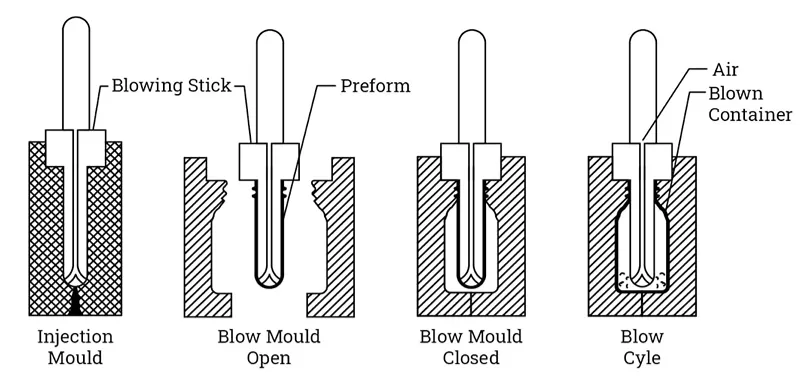
This involves injecting melted plastic into a mold to form specific shapes for containers like bottles, jars, and caps.
Extrusion
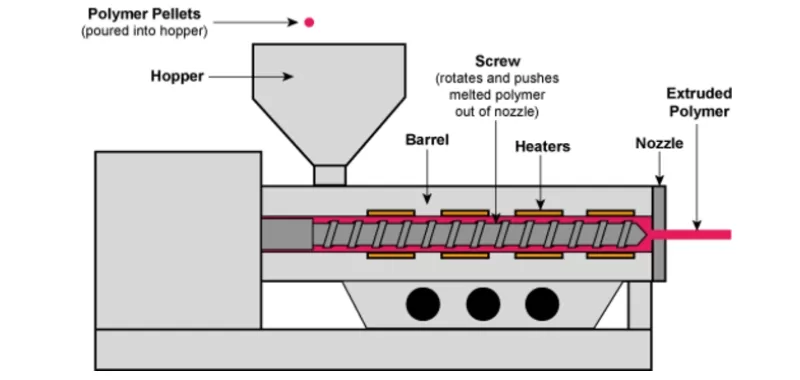
Melted plastic is forced through a mold to create continuous shapes cut into the desired lengths. This is commonly used for items like tubes and cylindrical containers.
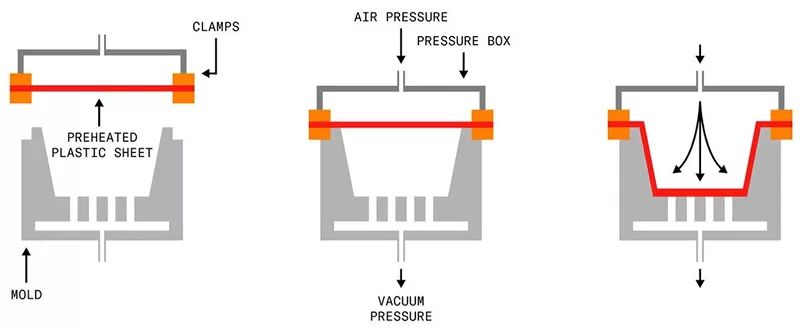
This process heats thermoplastic sheets and molds them into specific shapes for containers like plastic boxes and trays.
Glass Blowing
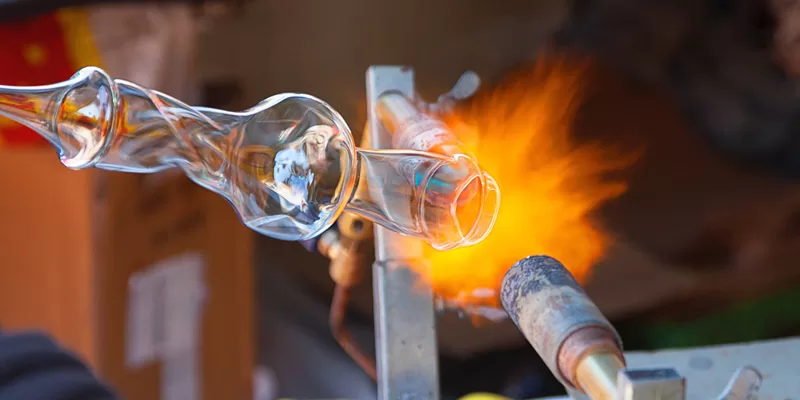
This technique involves heating glass blocks until they soften, then blowing air to form specific shapes for glass containers like bottles.
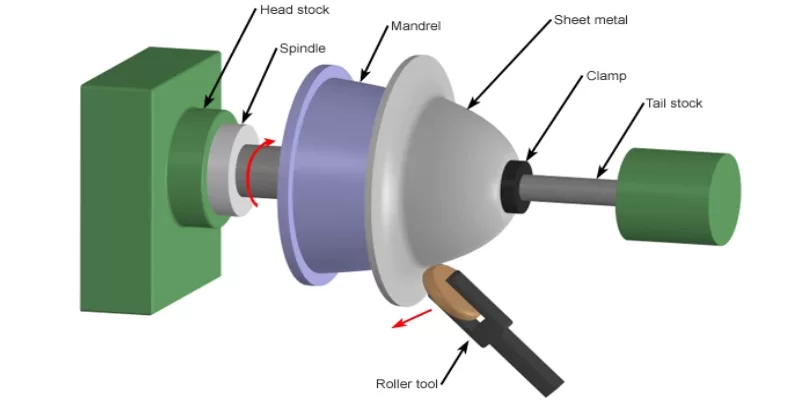
Using metal materials involves rolling and stamping to create metal packaging containers, such as aluminum bottle caps.
Techniques like printing, spraying, and screen printing are used to add decorative elements to the packaging surface, enhancing its appeal.
Assembly and Packaging
This involves assembling components (such as nozzles, caps, etc.) with the packaging container and performing the final packaging.
Different techniques can be combined to meet the specific needs of a cosmetic product. For example, a product might use injection molding and printing for decoration.
It is commonly used for making cosmetic bottles, caps, tubes, and other packaging containers. Standard plastic materials include Polyethylene (PE), Polypropylene (PP), Polyvinyl Chloride (PVC), etc.
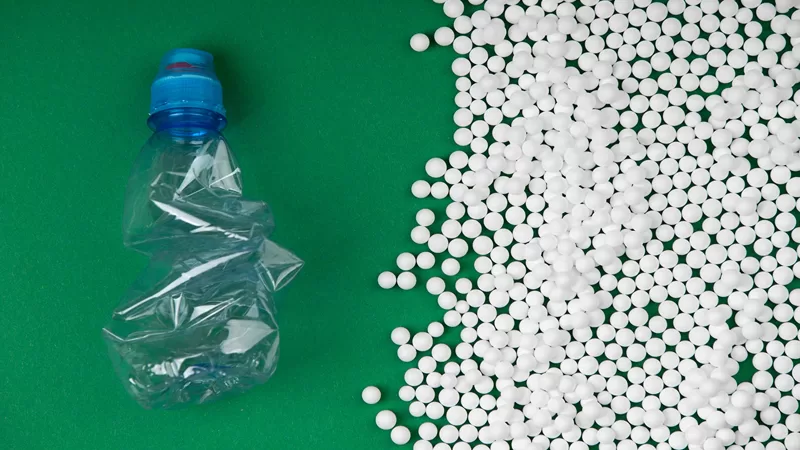
Glass
Glass materials are often used for crafting high-end cosmetic bottles, such as perfume bottles, essence bottles, etc.
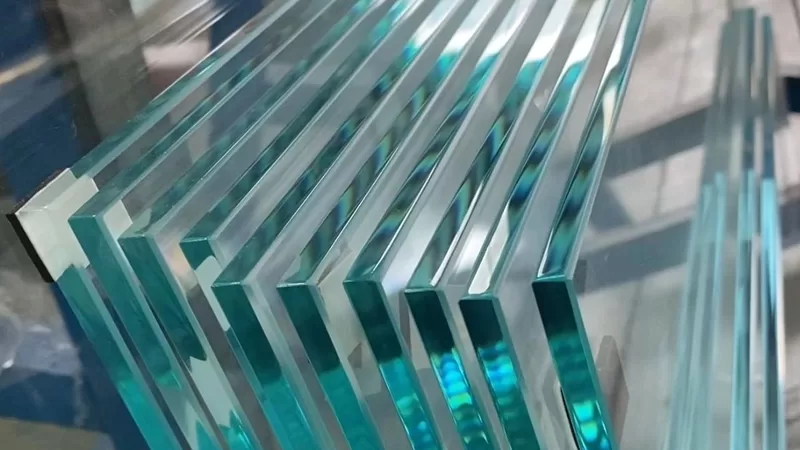
Metal materials are typically used for producing bottle caps, sprayers, and other accessories. Typical metals include aluminum, tin, etc.
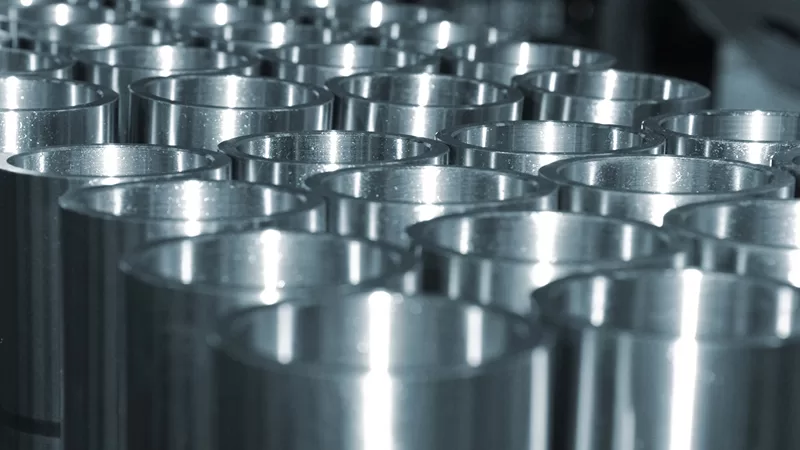
Wood
Wood may be chosen as the material for some high-end and delicate cosmetics packaging, such as wooden cosmetic boxes.

Plastic Composite Materials
Some high-demand packaging may use a combination of various materials to achieve specific protective and decorative effects.
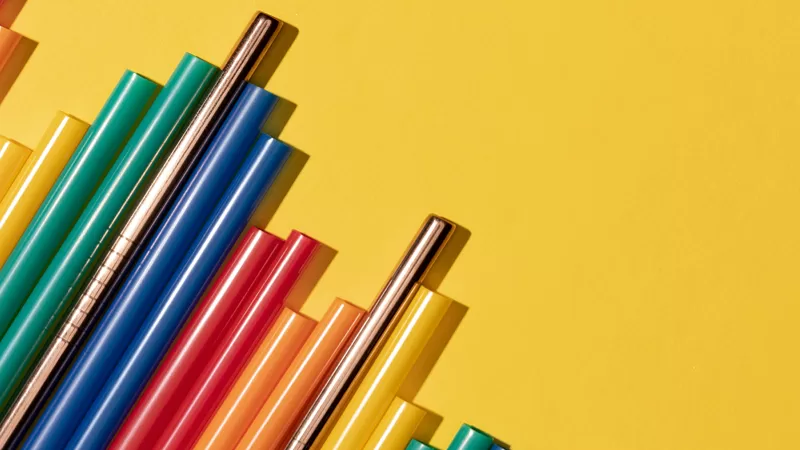
Specialized Materials
Examples include acrylic, ceramics, etc., which are used for creating packaging with unique designs or functions.
The materials mentioned above can be selected based on the characteristics of the skincare or cosmetics, brand positioning, and your preferences and requirements.
In advertising and retail sales, color psychology plays a pivotal role. Packaging color influences consumers, attracting or repelling them from your goods. All you need to do as a customer is provide Pantone color or send the sample for reference to the manufacturer.
Eco-Friendly Cosmetics Packaging
The idea of eco-consciousness and embracing a “circular economy” has gained widespread acceptance among the younger generation and the majority of middle-class consumers. If your retail packaging isn’t recyclable or contains excessive plastic, it might be a good time to consider reevaluating.
Indeed, let’s wrap it up.
Consider these aspects when choosing cosmetics packaging: type, quality, techniques, materials, colors, and eco-friendliness. Additionally, factor in your brand identity, preferences, and specific product attributes for visibility, protection, shape, label, and other packaging elements.
Custom Skincare and Cosmetics Packaging: Choosing OEM or ODM?
In custom cosmetics packaging, making a pivotal decision can significantly impact the direction of your product line. Choosing between OEM (Original Equipment Manufacturer) or ODM (Original Design Manufacturer).
Each option has unique advantages and considerations, making this choice crucial for businesses aiming to launch their cosmetic products into the market. Let’s delve into the distinctions between OEM and ODM to help you make an informed decision.
OEM (Original Equipment Manufacturer)
Definition
OEM manufacturers produce products according to the designs and specifications provided by the client. The client can attach their brand label to the product, establishing their proprietary brand.
Example
If a cosmetics company opts for OEM manufacturing, it provides its unique formula and design. The manufacturer then produces the product according to these specifications.
The final product carries the company’s brand label and is produced per their requirements.
Suitable for
This suits companies with unique product formulas and designs but lacks manufacturing capabilities or those wishing to brand products under their label.
ODM (Original Design Manufacturer)
Definition
ODM manufacturers typically independently design and develop products, offering them to clients. Clients can customize them to a certain extent, such as changing colors, scents, etc., but cannot alter the product’s basic design.
Example
If a cosmetics company chooses ODM manufacturing, the manufacturer designs and develops a range of appealing cosmetics products. Clients can personalize them to some extent, such as altering colors, scents, etc., but cannot modify the product’s basic design.
Suitable for
This suits companies looking to introduce new products rapidly without a design team or R&D capabilities.
Ultimately, your choice between OEM and ODM will depend on your company’s resources, needs, and the level of control you desire over product design and development. Additionally, you can flexibly select between the two cooperation methods based on your specific circumstances.
Why Purchase Skincare and Cosmetics Packaging from China?
The straight-up answer is that importing from China is cheaper than local procurement because China possesses more mature and advanced production technology than Southeast Asia.
Here are several more detailed reasons why China remains the top choice for wholesale skincare or cosmetics packaging:
Cost-Effectiveness
China offers competitive pricing thanks to economies of scale and lower production costs, resulting in substantial savings, particularly for large orders.
Customization Flexibility
Chinese manufacturers can often customize packaging according to your brand’s specifications. This includes various shapes, sizes, materials, colors, and printing options.
Supply Chain Efficiency
China’s well-connected global trade routes result in efficient shipping and logistics, leading to faster delivery times than other regions.
Regulatory Compliance
Established manufacturers in China are often aware of international quality and safety standards, mainly if they export products globally. They can help ensure your packaging complies with relevant regulations.
Innovative Solutions
Chinese manufacturers lead in innovative packaging materials and designs, providing advanced solutions to enhance the appeal and functionality of your skincare or cosmetics packaging.
In summary, China is the top choice for importing skincare or cosmetics packaging, offering cost-effectiveness, customization options, efficient supply chains, regulatory adherence, and innovative solutions. The shift from “Made in China” to “Created in China” underscores a growing focus on innovation and creativity.
Warren Buffett explains it best:
China’s rapid growth and innovation in manufacturing is simply amazing.
Where to Purchase Skincare and Cosmetics Packaging from China?
Many channels and methods are available for importing wholesale skincare or cosmetic packaging, so choosing a suitable and reliable supplier for your business is crucial. This chapter will help you understand the basic information about China’s cosmetic market.
9 Offline Cosmetic Packaging Wholesale Markets
Exploring offline wholesale markets in China is a must for cosmetic packaging entrepreneurs. These markets, spread across cities, are central hubs for manufacturers, suppliers, and buyers.
| Name | Year Established | Location |
| Guangzhou Beauty Exchange Center | 1992 | Guangzhou, Guangdong |
| Mingtong Cosmetics Wholesale Markets | 2008 | Shenzhen, Guangdong |
| Xingfa Plaza Cosmetics Wholesale Markets | 1995 | Guangzhou, Guangdong |
| Shanghai International Cosmetic Center | 2002 | Shanghai |
| Eva International Cosmetic Purchasing Center | 2005 | Guangzhou, Guangdong |
| Yiwu International Trade City | 1982 | Yiwu, Zhejiang |
| Lantian Cosmetics Wholesale Market | 1996 | Linyi, Shandong |
| Hehuachi Wholesale Market | 1986 | Chengdu, Sichuan |
| Liuduqiao Cosmetics Wholesale Market | 2012 | Wuhan, Hubei |
When it comes to B2B portals, Alibaba holds undeniable significance. As one of the most renowned and widely used online B2B trading platforms, it offers a comprehensive range of products. Here, you can discover a wide array of your preferred brand labels.
BeauteTrade stands out as an exclusive online trading platform entirely focused on cosmetics. Its dedication to the cosmetics industry has garnered immense popularity among cosmetic dealers.
It’s a well-known B2B platform for purchasing Chinese goods at reasonable rates. Unlike BeauteTrade, it caters to a broad spectrum of industries.
It’s worth noting that some of the best suppliers are known for competitive pricing, quality products, export expertise, and quick lead times and may not be listed on these platforms.
Therefore, exploring additional channels and making direct inquiries can yield valuable connections in the Chinese market.
Skincare and Cosmetic Packaging Manufacturer Website
In addition to utilizing Chinese B2B wholesale platforms, a direct and efficient approach to connect with manufacturers for skincare and cosmetic packaging is to approach them directly. You can directly communicate with the factories, providing them with your specific requirements.
Furthermore, they can manage the entire process for you, encompassing production monitoring, quality checks, global shipping, and customs procedures.
Most importantly, no middlemen are profiting from markups.
This is why manufacturer websites are so popular among importers on all scales.
Just like Visonpack, a leading China-based skincare and cosmetic packaging supplier, Visonpack provides high-quality packaging solutions to meet the diverse needs of cosmetic brands worldwide.
On Visonpack.com, you can browse all our products (though we offer far more than what’s displayed).
Even if you can’t find the cosmetic packaging you’re looking for on the shelves, you can submit your requirements to us. As an experienced factory, we can swiftly manufacture exactly what you need.
When you inquire on Visonpack.com, you’ll receive our promptest response. We assure you of free sampling within seven days. We’re here to save you time and money while maximizing efficiency to the fullest.
How to Evaluate Skincare and Cosmetics Packaging Suppliers?
As a businessman, you wouldn’t want manufacturers to cut corners. Choosing the right supplier can be pivotal for the success of your beauty venture. When selecting a supplier, you want to ensure things are done right, not just done quickly.
When conducting your inspection, it’s important to consider several factors, including production capacity, customization capacity, quality management, minimum order requirements, and potential communication barriers.
Now, let’s dive in and get the lowdown.
Production Capacity
The first thing is to understand the production capacity of the cosmetic packaging manufacturer. You can quickly understand by asking these questions:
- Are they a trading company or a manufacturer?
Asking whether they are a trading company or a manufacturer is essential during negotiations because it helps understand the nature of their business.
If they are a trading company, they act as intermediaries and may not have direct control over the production process. This can impact factors like pricing, quality control, and lead times.
If they are a manufacturer, it means they produce the products themselves. This may provide more control over production, potentially leading to better quality control and pricing.
- What is the capacity for production?
It ensures that the supplier can handle the required products, preventing delays or shortages. Understanding the production capacity is fundamental for a smooth and successful transaction in cosmetic packaging.
- How long does it take to produce and complete a new order?
It ensures that products are manufactured and delivered within the desired timeframe, meeting market demands and customer expectations. Inquiring about production lead times ensures a smooth and well-coordinated transaction process in cosmetic packaging.
- Do they provide Eco-Friendly Cosmetics Packaging?
It allows you to align your brand with eco-conscious practices, meeting the growing consumer demand for sustainable products. And ensures compliance with environmental regulations and standards, reducing potential legal and regulatory risks.
Overall, inquiring about eco-friendly cosmetics packaging demonstrates a commitment to sustainability and responsible business practices in the cosmetic packaging industry.
Customization Capacity
In cosmetic packaging transactions, asking whether the supplier can provide various customization options for packaging is crucial for the following reasons:
Brand Identity
Customized packaging allows you to align the visual aesthetics with your brand’s identity, enhancing recognition and brand loyalty among consumers.
Product Differentiation
It enables you to stand out in a competitive market by offering unique packaging designs that distinguish your products from others.
Consumer Preferences
Customization allows you to cater to specific consumer preferences, such as eco-friendly materials, shapes, or special finishes.
Market Trends
The ability to customize packaging ensures that you can adapt to changing market trends and consumer demands swiftly.
Flexibility in Marketing Strategies
It provides the flexibility to adjust packaging based on marketing campaigns, seasonal promotions, or product line expansions.
All in all, inquiring about customization options ensures that the supplier can meet your specific branding and marketing requirements in the cosmetic packaging industry.
Quality Management
To comprehensively evaluate a cosmetics packaging supplier’s quality management capability, follow these steps to ensure top-notch products for your business.
Request Quality Assurance Agreements
Inquire whether the manufacturer has established comprehensive agreements to ensure continuous testing at all stages of production and assembly. This is crucial for maintaining consistent quality standards.
Compliance with Safety Regulations
Verifies whether the supplier adheres to material safety regulations regarding reasonable pricing, cosmetic ingredients, and practices related to animal testing. This ensures ethical and legally compliant sourcing practices.
Examine Quality Control Processes
Request information on the supplier’s quality control processes and protocols. Understanding how they conduct tests and inspections can give you confidence in their commitment to delivering high-quality products.
Review Certifications and Test Reports
Ask for relevant certifications and test reports that validate the quality and safety of their cosmetic packaging materials. Considering these factors, you can confidently assess a cosmetics packaging supplier’s quality management and choose a reliable partner that meets your needs.
Minimum Order Requirement
Understanding the minimum order requirement of the supplier in cosmetic packaging transactions is crucial for several reasons:
Budget Planning
Knowing the minimum order quantity allows you to plan your budget effectively. It helps you allocate resources appropriately and avoid unexpected costs.
Avoiding Excess Inventory
It prevents you from ordering more products than you can sell or store. This is especially important for perishable or time-sensitive items.
Negotiating Terms
This allows you to negotiate with the supplier for more favorable terms based on your needs and limitations.
Ensuring Supplier Compatibility
It helps ensure the supplier’s production capacity aligns with your business requirements, preventing potential delays or complications.
Compliance with Supplier Policies
Understanding the minimum order requirement helps you comply with the supplier’s policies, fostering a smooth and professional business relationship. Overall, comprehending the minimum order requirement empowers you to make informed decisions and establish a mutually beneficial partnership with the supplier.
Potential Communication Barrier
The manufacturer’s communication ability is often overlooked when importing goods from foreign countries like China. However, clear and concise communication with the manufacturer is crucial. Even the most minor details must be communicated accurately.
If there is a lack of effective communication with the factory, you may hesitate to engage with them. You should consider:
- What is the proficiency level of the salesperson in English?
- Is the manufacturer sufficiently professional? Do they thoroughly understand your requirements, especially when customization is needed for your products?
- Can the manufacturer communicate with you on time?
(Imagine waiting weeks to receive an explanation when an order has an issue!)
Clear and effective communication ensures that your requirements are understood and met, leading to a successful partnership with the manufacturer.
What to Consider When Purchasing Skincare and Cosmetics Packaging?
After completing the supplier research, you can proceed to place an order for the cosmetics packaging you desire.
Double-check transaction details, including the purchase order and invoice, when placing the first order with a new supplier. Ensure alignment on product specifications to prevent disputes.
When placing an order, you should carefully check these two documents:
[Purchase Order ] Created and submitted by the supplier to you, containing crucial transaction information.
[Invoice] Generated by the supplier after receiving the purchase order, documenting the transaction amount and details.
These documents should clearly define all transaction details, leaving no room for misunderstanding. This includes fundamentals like product specifications, unit quantities, pricing, and packaging.
Payment Methods
Most Chinese cosmetics packaging suppliers accept the US Dollar (USD) as a widely used global currency.
A mature supplier should be able to provide multiple payment methods, such as
Telegraphic Transfer (TT)
Telegraphic Transfer (TT) is a widely used electronic fund transfer method between banks, known for its lower fees compared to other options. It is universally accepted by Chinese suppliers. While TT payments lack inherent theft protection, import professionals often recommend it, emphasizing the importance of thorough supplier vetting for added security.
Letter of Credit (LC or LOC)
A Letter of Credit (LC or LOC) provides an extra layer of security in fund transfers. You initiate payment with your bank, which then issues an assurance to the supplier. The vendor receives payment only after your bank verifies that the correct quantity of items has reached the designated destination.
While an LC provides added security, its substantial fees may not justify its use. It’s primarily employed for large transactions. Importers often face risks related to product quality and shipping delays, which an LC doesn’t mitigate.
PayPal
While secure and easy to use, this method is not frequently favored by importers. PayPal imposes relatively high transaction fees, and not all suppliers have PayPal accounts for payment acceptance.
When employed, PayPal is typically limited to smaller, preliminary purchases—like sample orders or trial purchases.
Western Union
Western Union is an international money transfer and payment services provider. It allows people to send and receive funds worldwide and can be used for personal remittances, business transactions, and more.
Users can complete transactions through an online platform or by visiting physical agent locations. This service is commonly used for international payments, emergency fund transfers, and other financial transactions.
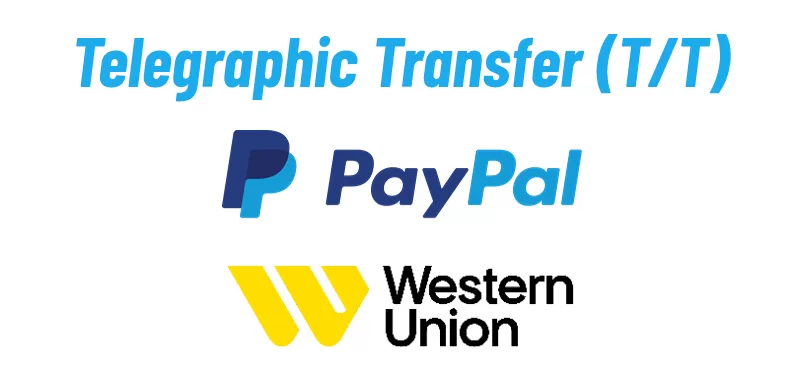
Shipping Cost & Methods
When estimating the cost of importing cosmetics packaging from China, it’s essential to consider the following factors:
- Unit price of cosmetic packaging products
- Shipping (express) packaging costs
- Product insurance
- Product weight (in kilograms) or volumetric weight (in cubic meters)
All of the above factors will affect the transportation cost. Most cosmetics packaging is lightweight, so the transportation cost is relatively low and can be measured in kilograms.
However, if the cosmetics packaging is measured by volume, the transportation cost will increase.
Therefore, before determining the mode of transportation, it is essential to confirm whether it is calculated by weight or volume.
Ocean and air freight are viable options for importing cosmetic packaging from China, each offering its advantages and limitations.
Ocean Freight
Ocean freight is suitable for businesses that prioritize cost-effectiveness and have sufficient lead time for inventory planning.
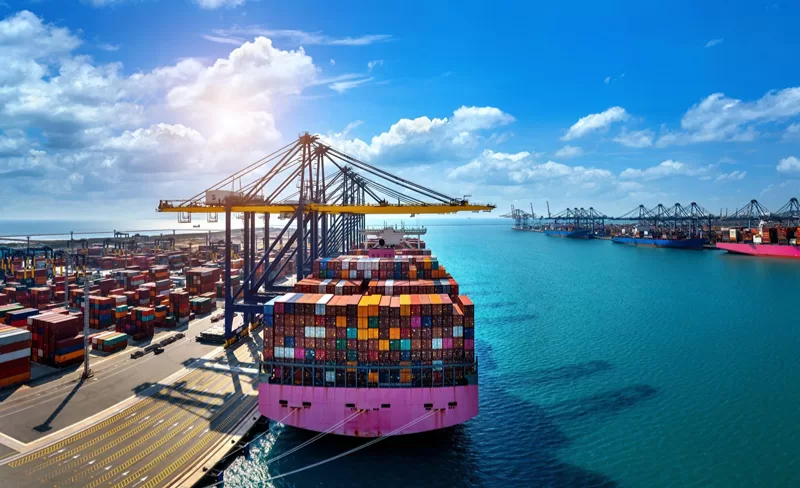
It is particularly applicable for bulk shipments of cosmetic packaging, allowing for more economical bulk transportation.
However, it is essential to note that sea freight typically requires longer transit times, making it not the best choice for products with time-sensitive considerations.
Air Freight
Air freight provides faster delivery times and is suitable for products with shorter shelf life or those that must be quickly introduced to the market to meet demand.
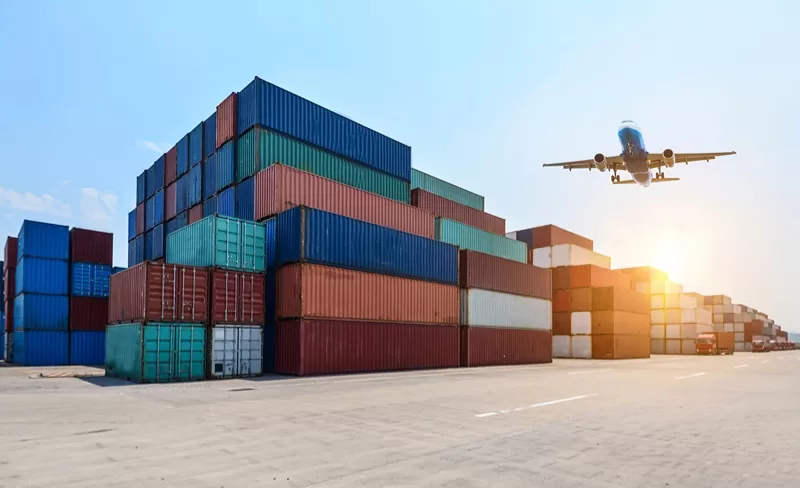
However, air freight costs are typically higher, making it suitable for small batches of high-value cosmetic packaging.
We previously wrote an article that provides a more detailed explanation of international shipping options for cosmetic packaging products.
Clearing Customs for Skincare and Cosmetic Packaging from China
Customs clearance is a crucial step in importing from China.
If you fail to provide the correct documents and follow the proper procedures to ensure your goods are not detained or inspected.
Both scenarios can lead to delays and high fees. In the worst case, your products may be seized, destroyed, or auctioned off.
Therefore, when importing skincare or cosmetic packaging from China, you should pay attention to these key points:
Prepare Complete Documents
Ensure you provide accurate and complete documents, including invoices, packing lists, and customs declarations.
Follow the Correct Procedures
Operate according to the local customs regulations and procedures to avoid unnecessary delays or issues.
Declare Accurately
Ensure the declared information is accurate, including the goods’ quantity, value, and specifications.
Understand Destination Country’s Regulations
Different countries may have varying import regulations and requirements for cosmetic packaging. It’s vital to be well-informed beforehand.
Compliance and Safety
Ensure that the imported cosmetic packaging complies with the regulations and safety standards of the destination country.
Budget for Expenses
Consider the potential customs clearance fees and duties to be prepared in advance.
Choose a Reliable Logistics Partner
Opt for an experienced and reputable logistics company that can provide professional customs clearance services.
Frequently Asked Questions (FAQs)
Can I still import goods from China?
Certainly! As of early December 2022, COVID-19 restrictions in China have loosened, positively impacting supply chain operations.
Do I need a license to import from China?
It depends on. The U.S. Customs and Border Protection typically does not demand a license or permit.
However, it’s worth noting that additional government agencies might necessitate specific permits, licenses, or certifications, contingent on the type of packaging being imported.
What is the cheapest way to import from China?
Shipping expenses differ, but the most economical method for importing from China is typically sea freight.
Even though Visonpack is solely a skincare and cosmetic packaging supplier, adhering to the principle that ‘the customer is God,’ you can provide us with detailed requests.
Our business experts will recommend the most suitable shipping method based on your situation.
Additionally, take advantage of cost savings with our in-house freight services. Access various shipping options, including air, sea, and rail. Enjoy comprehensive services, including door-to-door delivery.